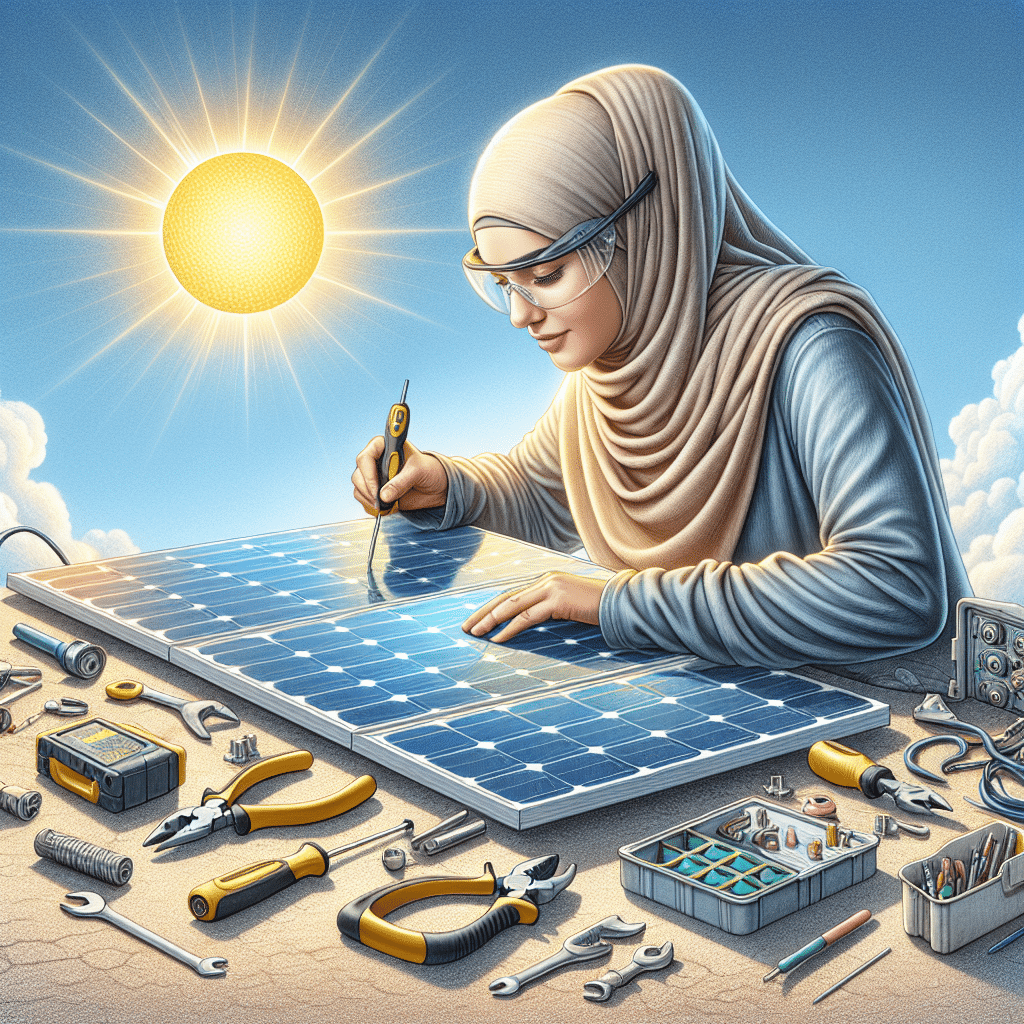Understanding Solar Gadgets
Solar gadgets harness energy from sunlight to function efficiently. They are increasingly popular due to their portability and eco-friendliness. However, like any electronic device, they can malfunction. Knowing how to repair them can save costs and extend their lifespan.
Common Types of Solar Gadgets
-
Solar Chargers: These convert sunlight into electricity to charge devices like smartphones.
-
Solar Lights: These outdoor lights use solar panels to store energy throughout the day for nighttime illumination.
-
Solar Power Banks: These portable batteries use solar energy to charge devices, ideal for camping and travel.
-
Solar Water Heaters: Systems that use solar energy for heating water, typically for residential use.
-
Solar Fans: These fans operate on solar energy, useful for cooling spaces during hot weather.
Tools and Materials Needed for Repairs
- Screwdriver Set: For opening devices and tightening screws.
- Multimeter: Essential for testing voltage and current.
- Soldering Iron: Needed for any electronic component repairs.
- Replacement Parts: Such as solar panels, batteries, or LED bulbs, depending on the gadget.
- Electrical Tape: For insulating wires and connections.
- Cleaning Supplies: A soft cloth and isopropyl alcohol for panel maintenance.
Safety Precautions
- Ensure Power Off: Always turn off the device before starting any repair.
- Use Proper Gear: Wear safety goggles and gloves to protect from sharp edges and accidental shocks.
- Work in a Dry Area: To avoid the risk of electric shock, repair in a dry environment.
Common Solar Gadget Problems and Fixes
1. Solar Chargers Not Working
Diagnosis: Inspect the solar panels for cracks or debris blocking sunlight.
Repair Steps:
- Clean the panel using a soft cloth and isopropyl alcohol.
- Use a multimeter to check voltage output. If the voltage is low, consider replacing the solar cells.
Replacement: Solar cells can often be replaced individually if they are damaged.
2. Solar Lights Dimming or Not Turning On
Diagnosis: This can be caused by a faulty battery or dirty solar panel.
Repair Steps:
- Remove the light casing and check the panel for dirt. Clean it carefully.
- Test the battery with a multimeter. If faulty, replace it with a compatible battery.
Battery Replacement: Be sure to use batteries that meet the voltage and specifications of the original.
3. Solar Water Heater Issues
Diagnosis: If the water is not heating, check for blockages in the pipes or faults in the solar collectors.
Repair Steps:
- Inspect and clear any blockages in the piping.
- Test the connectors on the solar collectors for any loose or corroded connections.
Collector Repair: Replace any broken or malfunctioning collector elements with new ones.
4. Solar Fan Malfunctions
Diagnosis: If the fan does not spin, the issue may be with the motor or power supply.
Repair Steps:
- Check the solar panel for functionality.
- Use a multimeter to test the fan motor; replace it if necessary.
Motor Replacement: Ensure the new motor matches specifications regarding size and voltage.
Preventive Maintenance Tips
-
Regular Cleaning: Clean solar panels monthly to maintain efficiency.
-
Check for Debris: Regularly remove leaves, branches, or snow from the panels to prevent shading.
-
Battery Care: Ensure batteries are regularly checked and replaced as needed to avoid degradation.
-
Inspections: Schedule periodic checks of your gadgets to catch potential issues early.
-
Store Properly: If you plan to store devices for an extended period, ensure they are charged and stored in a dry, cool place.
When to Seek Professional Help
Some repairs may require specialized knowledge, especially with complex solar installations. If you encounter issues beyond simple fixes, such as wiring problems or component failure, consulting a professional is advised.
Troubleshooting Tips
-
Consult the Manual: Refer to the user manual for specific troubleshooting guidelines and diagrams.
-
Online Forums: Join solar panel forums where users share solutions to common issues.
-
Manufacturer Support: Reach out to the manufacturer for warranty claims or dedicated repair services.
Eco-Friendly Disposal of Old Components
When you replace parts, make sure to dispose of the old components responsibly. Solar batteries, for example, must be recycled at designated facilities to prevent environmental harm.
Final Thoughts on Solar Gadget Repairs
Repairing solar gadgets requires basic electronics knowledge and can be accomplished with the right tools. Whether tackling a DIY project or deciding to reach out for professional help, understanding the components and their functions will empower you to maintain your solar technology effectively. Maintaining the longevity of your solar gadgets solidifies your eco-friendly lifestyle while supporting renewable energy practices.
